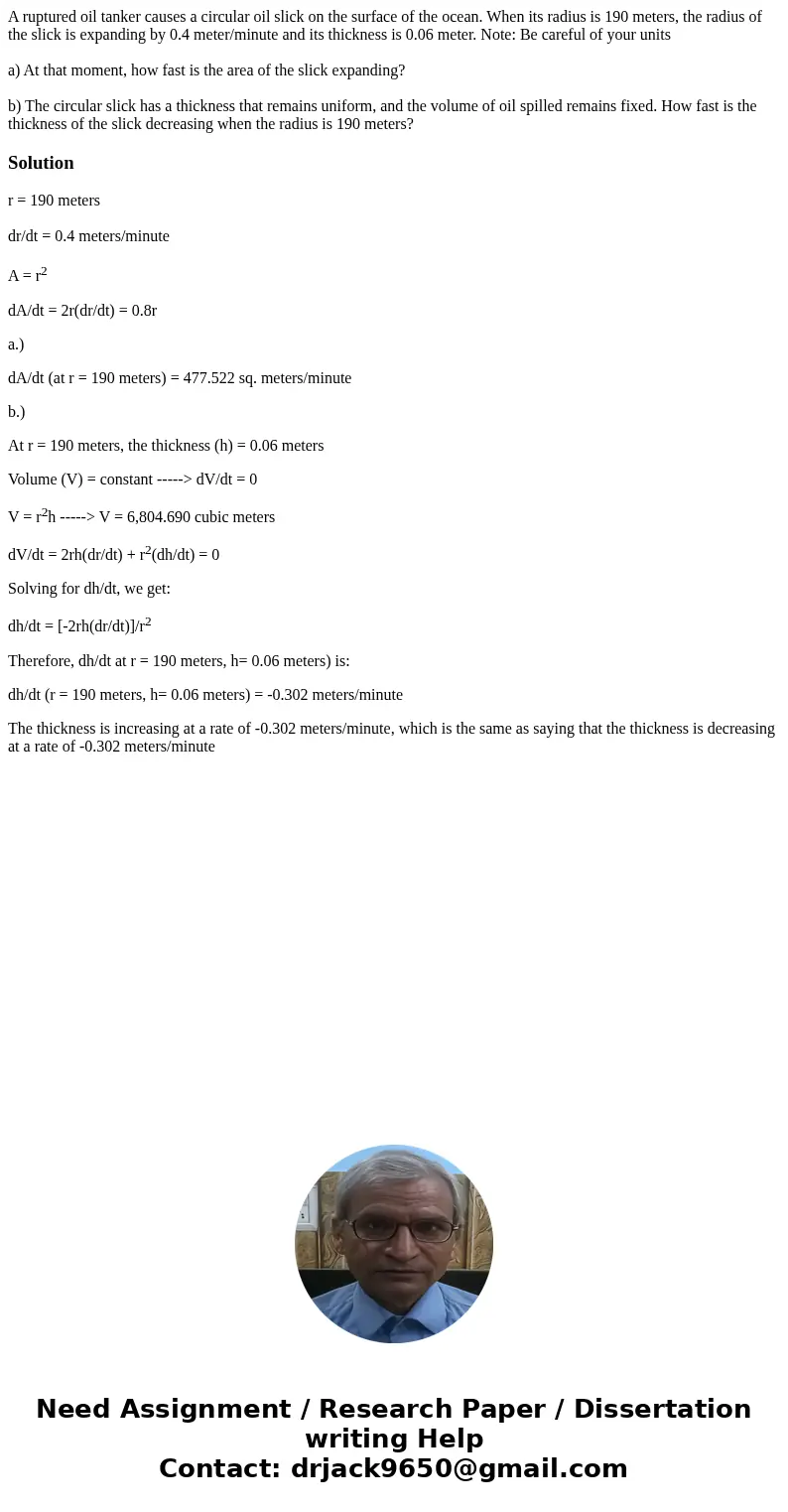A ruptured oil tanker causes a circular oil slick on the sur
A ruptured oil tanker causes a circular oil slick on the surface of the ocean. When its radius is 190 meters, the radius of the slick is expanding by 0.4 meter/minute and its thickness is 0.06 meter. Note: Be careful of your units
a) At that moment, how fast is the area of the slick expanding?
b) The circular slick has a thickness that remains uniform, and the volume of oil spilled remains fixed. How fast is the thickness of the slick decreasing when the radius is 190 meters?
a) At that moment, how fast is the area of the slick expanding?
b) The circular slick has a thickness that remains uniform, and the volume of oil spilled remains fixed. How fast is the thickness of the slick decreasing when the radius is 190 meters?
Solution
r = 190 meters
dr/dt = 0.4 meters/minute
A = r2
dA/dt = 2r(dr/dt) = 0.8r
a.)
dA/dt (at r = 190 meters) = 477.522 sq. meters/minute
b.)
At r = 190 meters, the thickness (h) = 0.06 meters
Volume (V) = constant -----> dV/dt = 0
V = r2h -----> V = 6,804.690 cubic meters
dV/dt = 2rh(dr/dt) + r2(dh/dt) = 0
Solving for dh/dt, we get:
dh/dt = [-2rh(dr/dt)]/r2
Therefore, dh/dt at r = 190 meters, h= 0.06 meters) is:
dh/dt (r = 190 meters, h= 0.06 meters) = -0.302 meters/minute
The thickness is increasing at a rate of -0.302 meters/minute, which is the same as saying that the thickness is decreasing at a rate of -0.302 meters/minute

 Homework Sourse
Homework Sourse